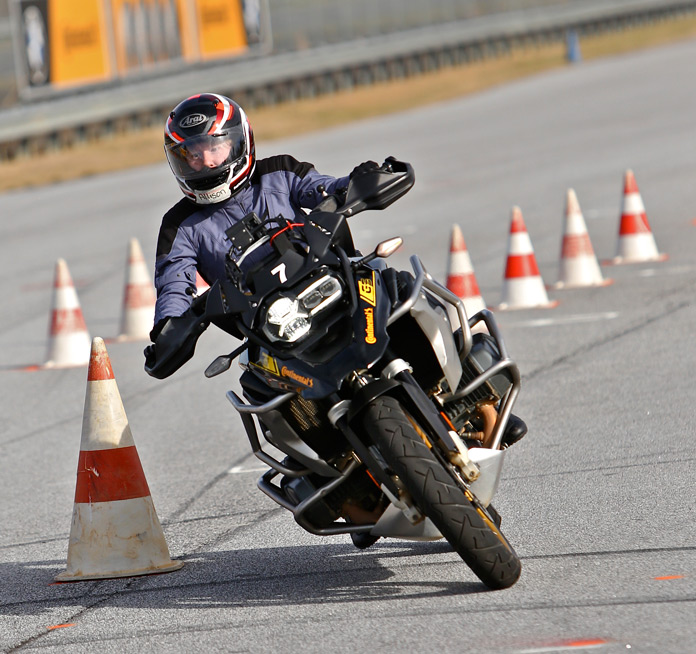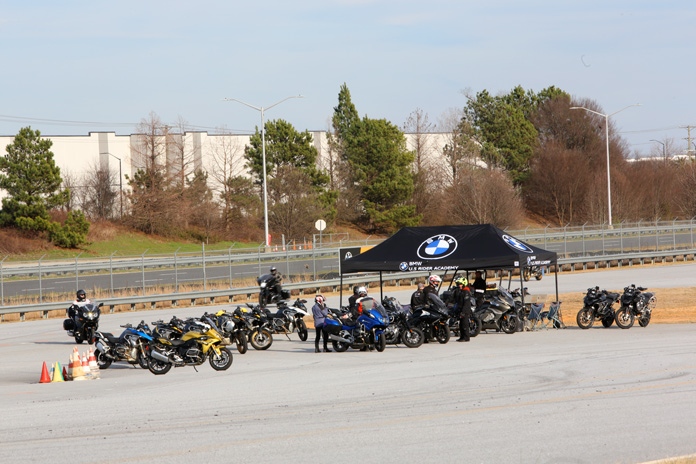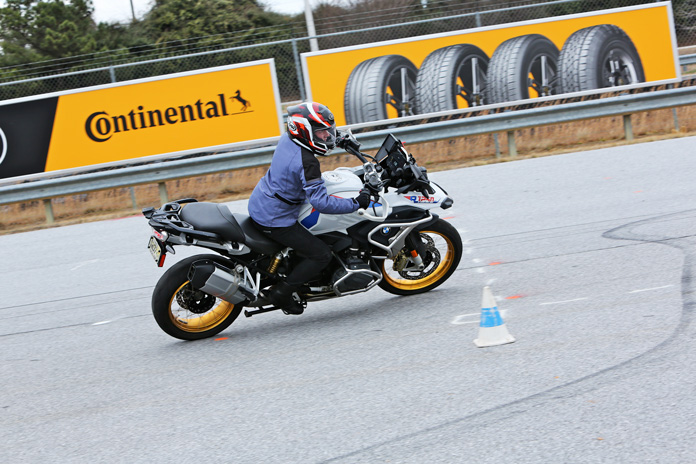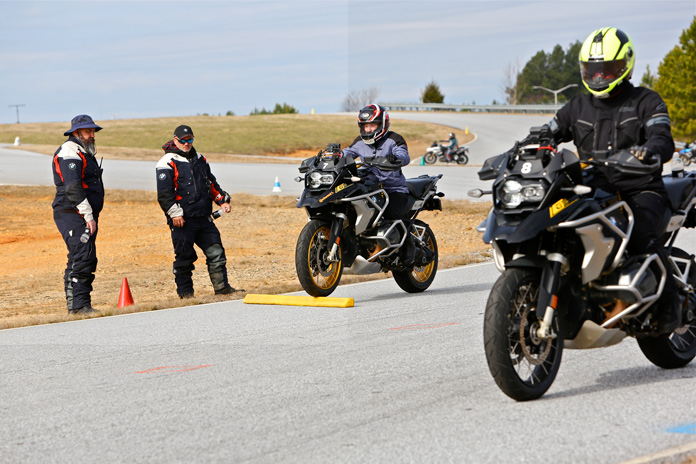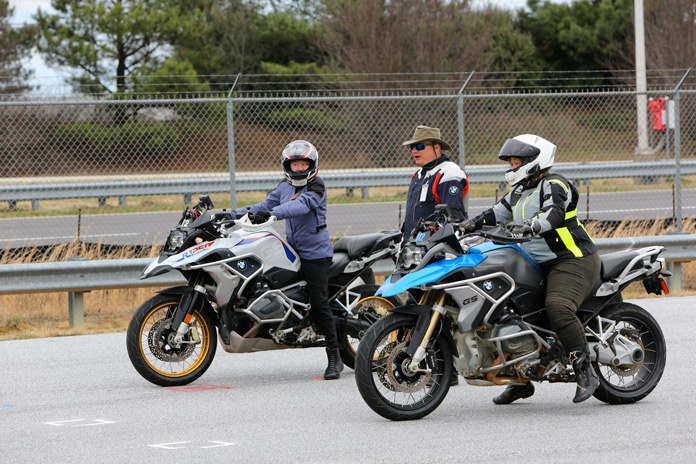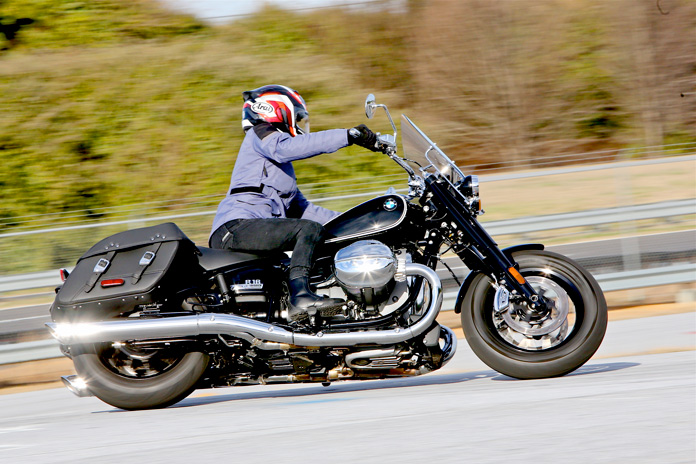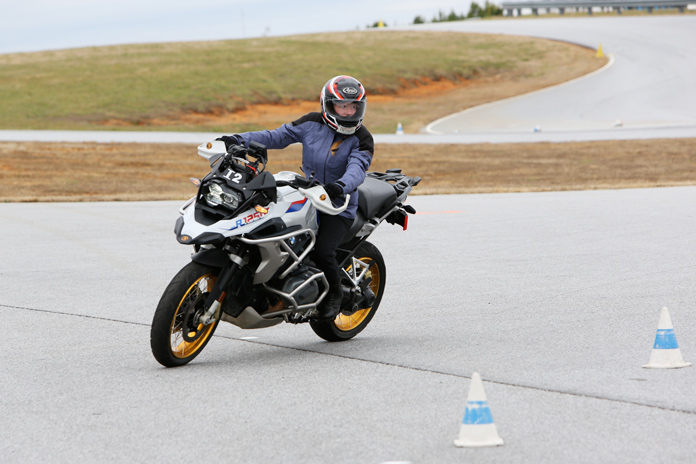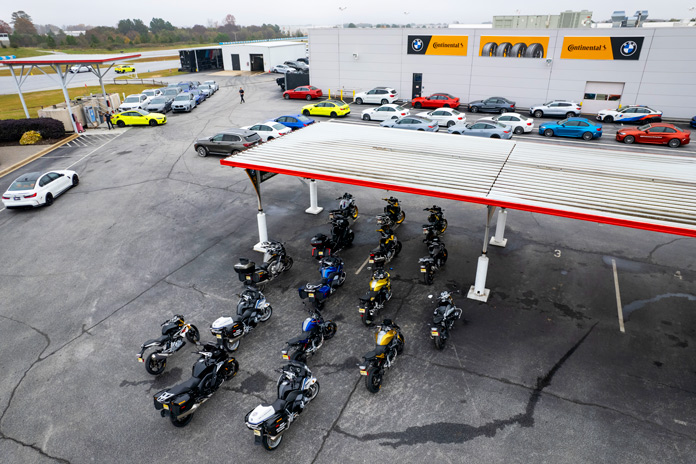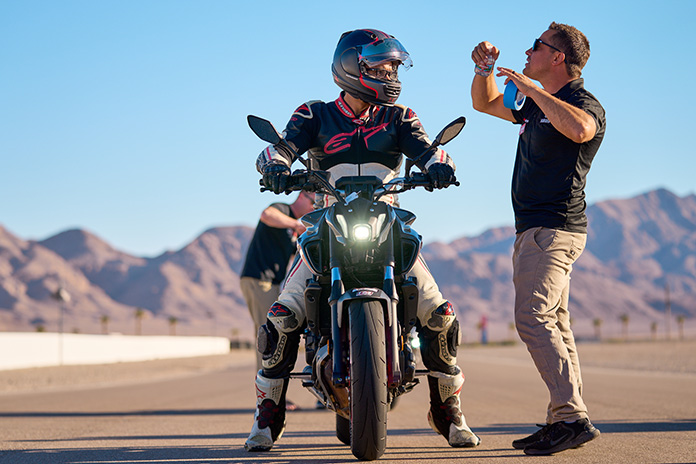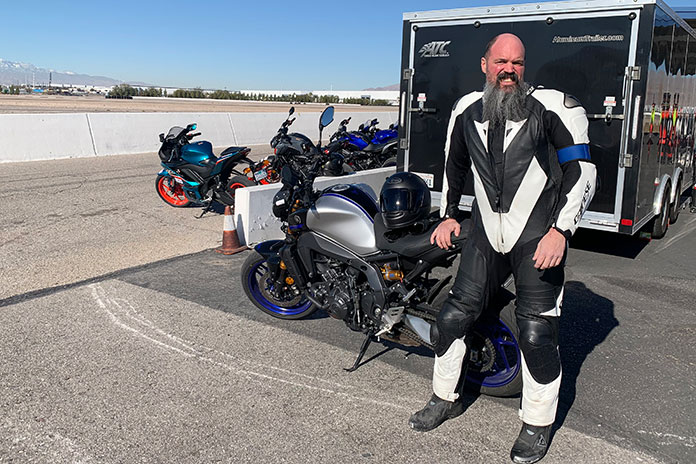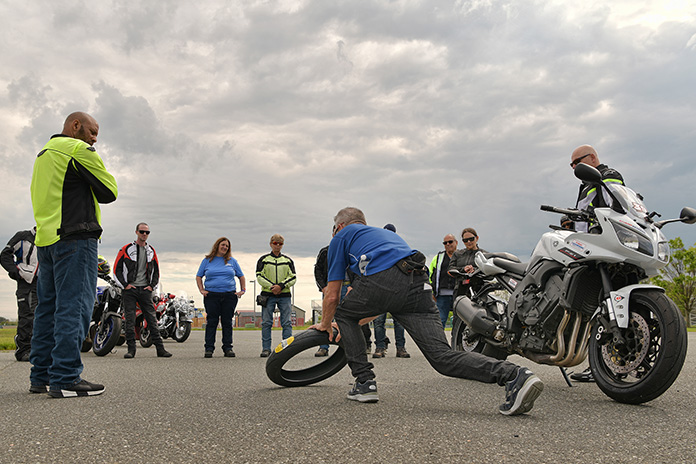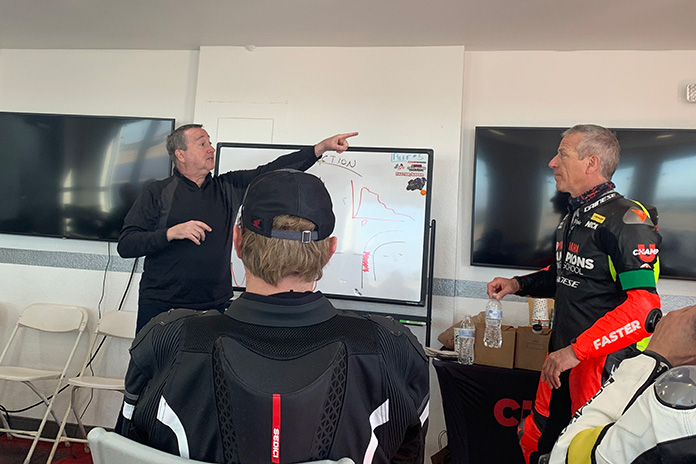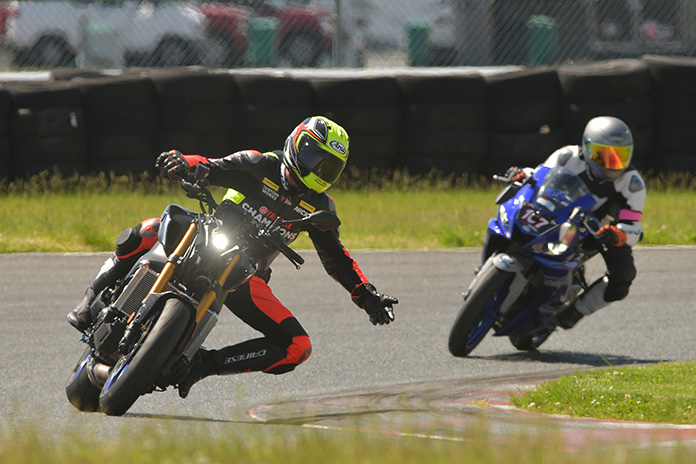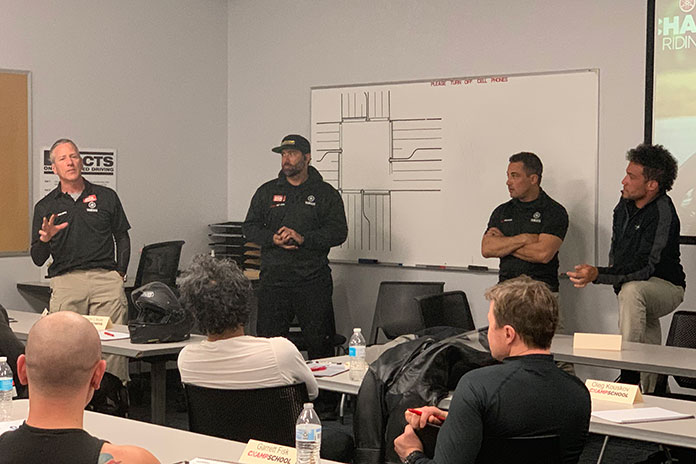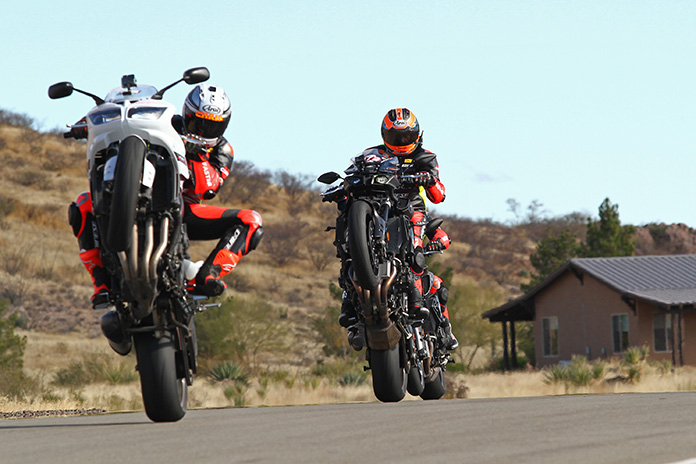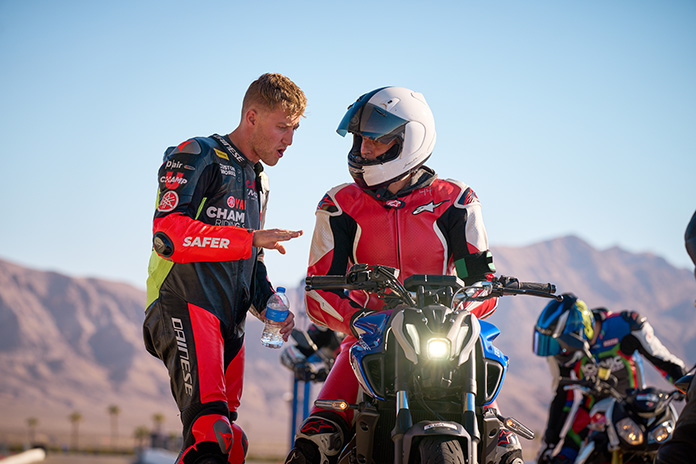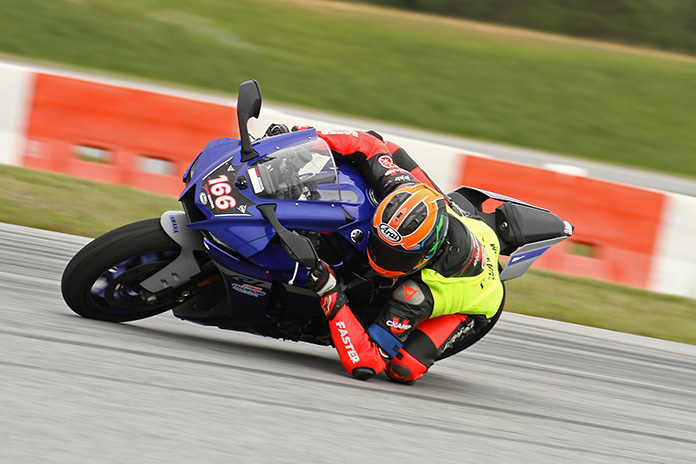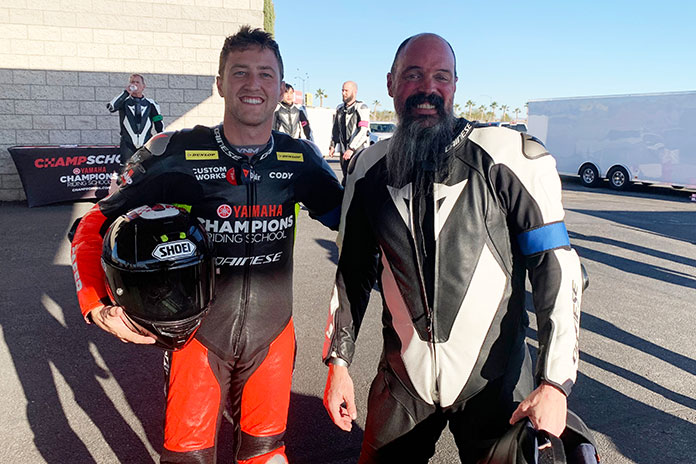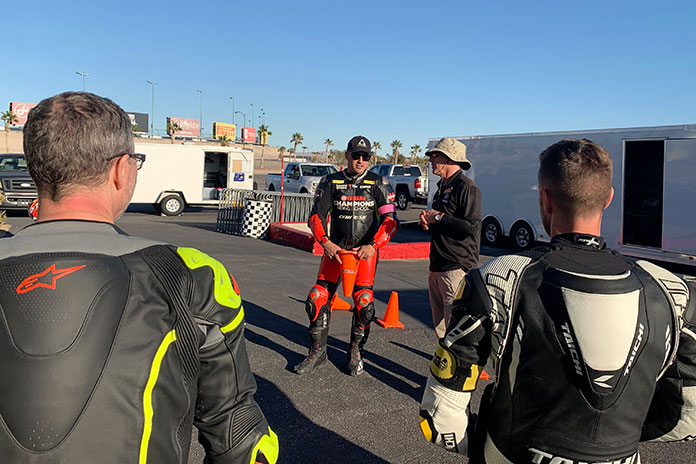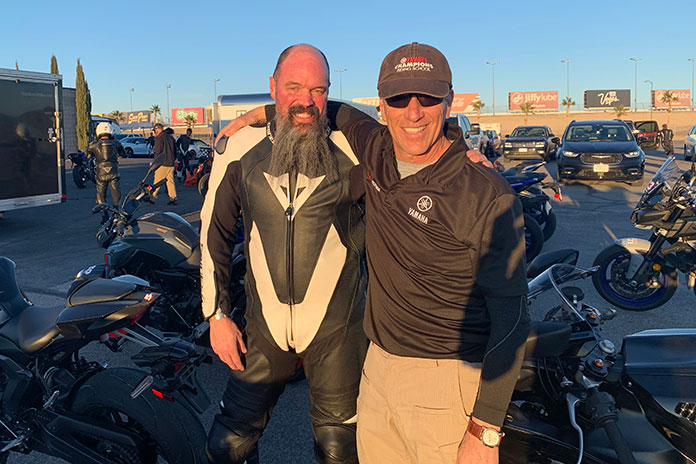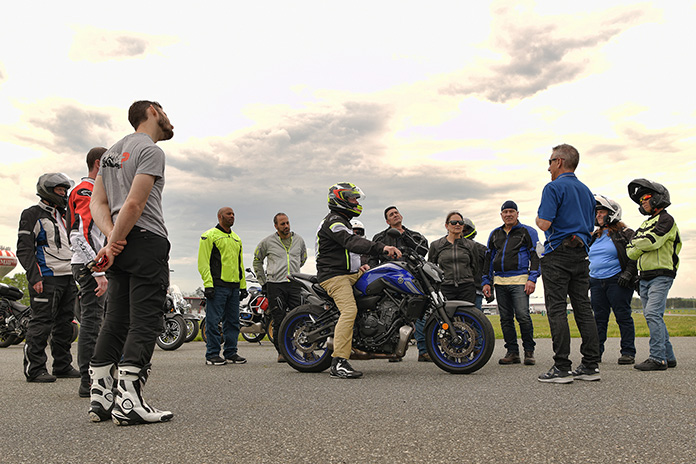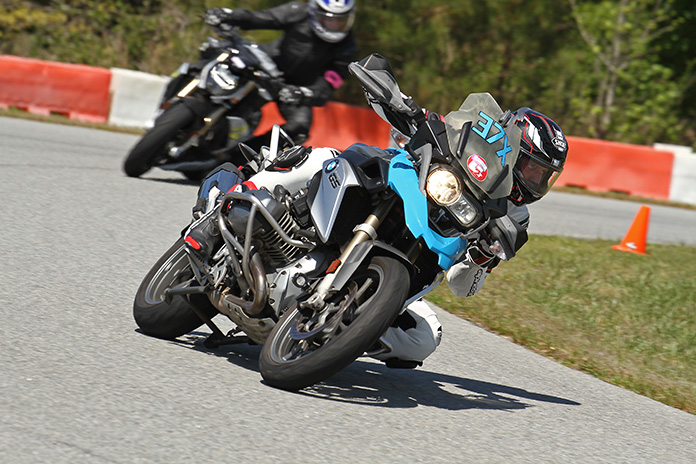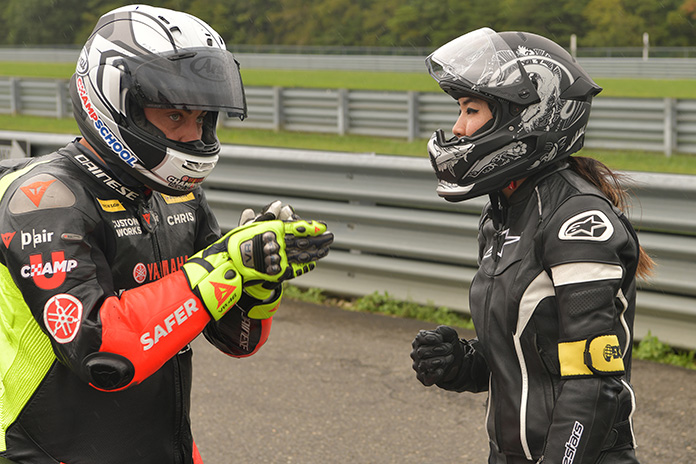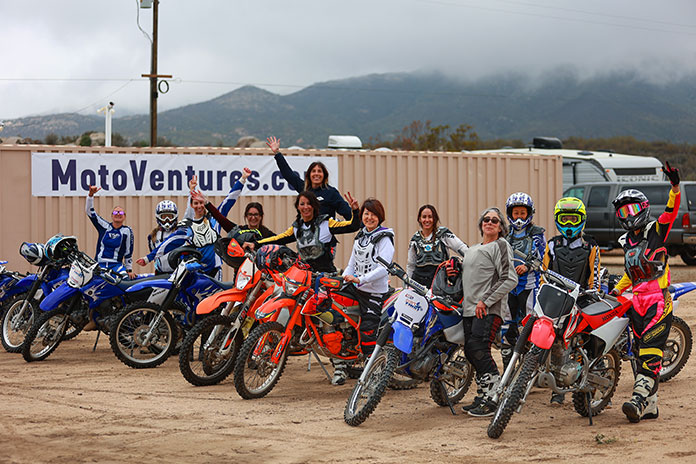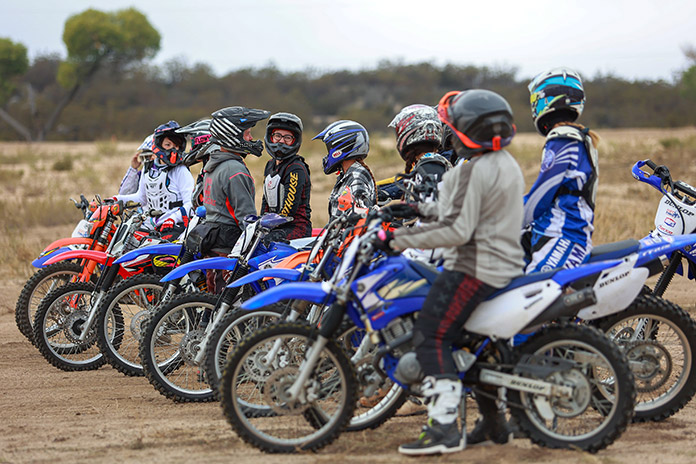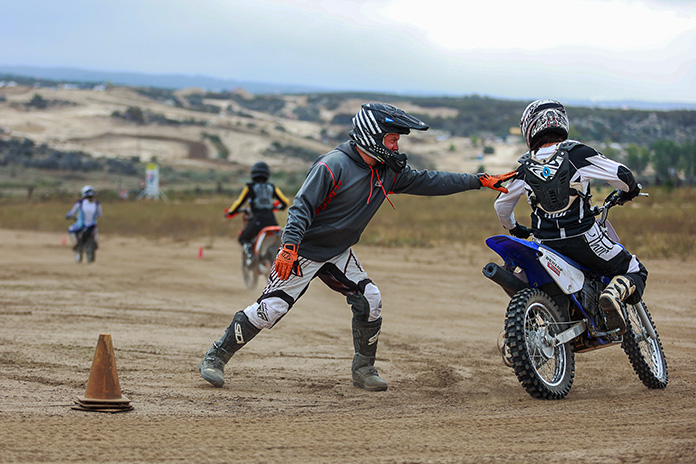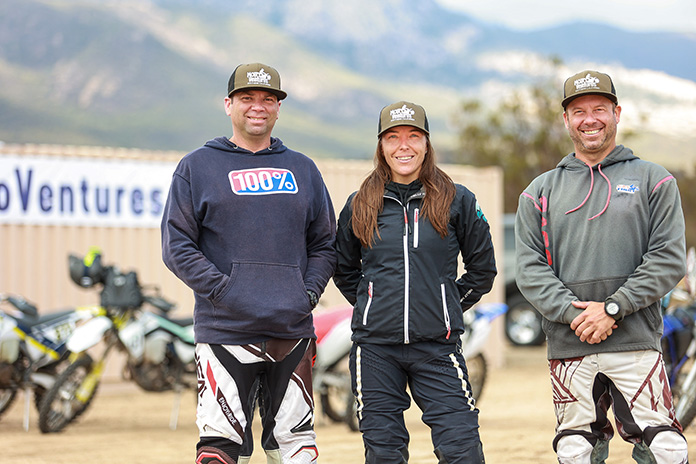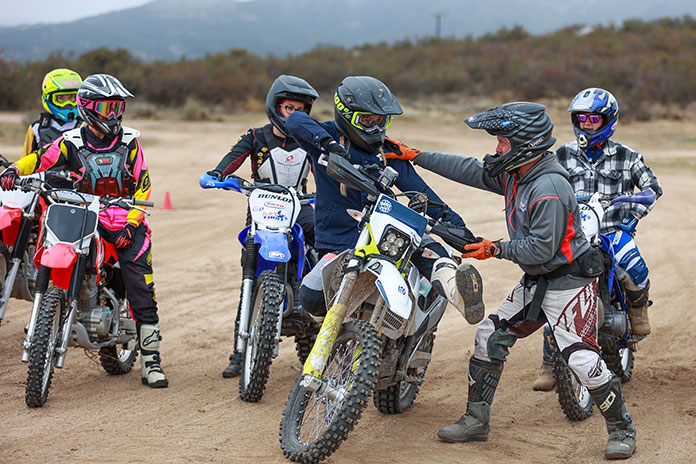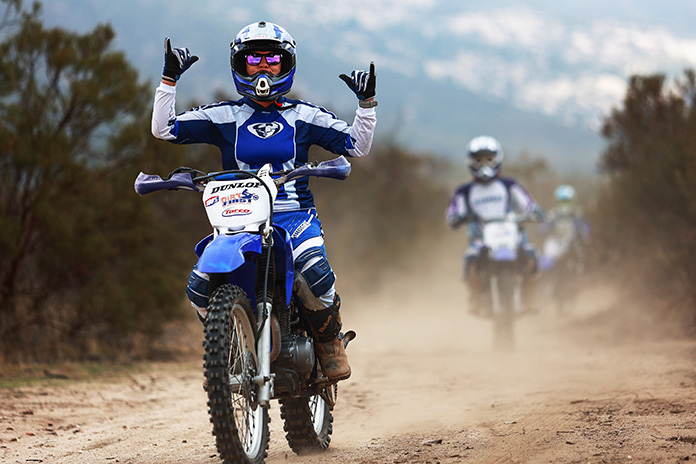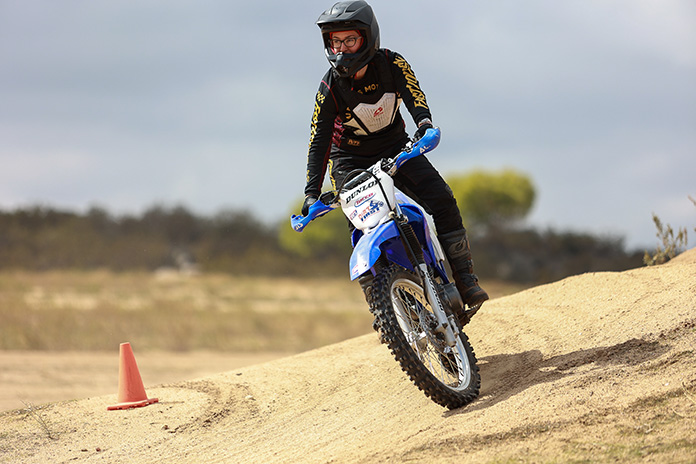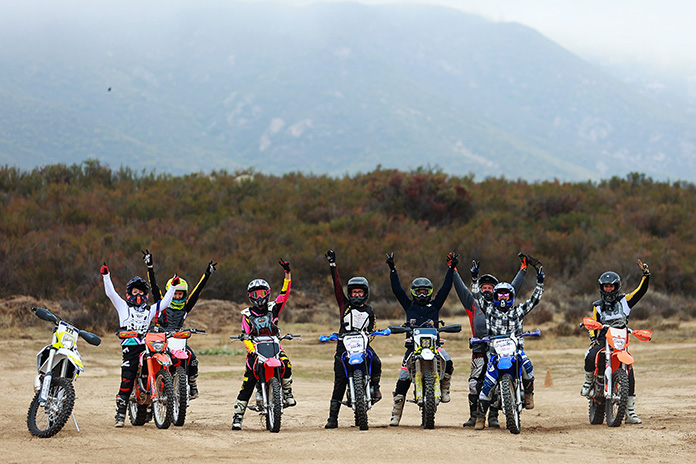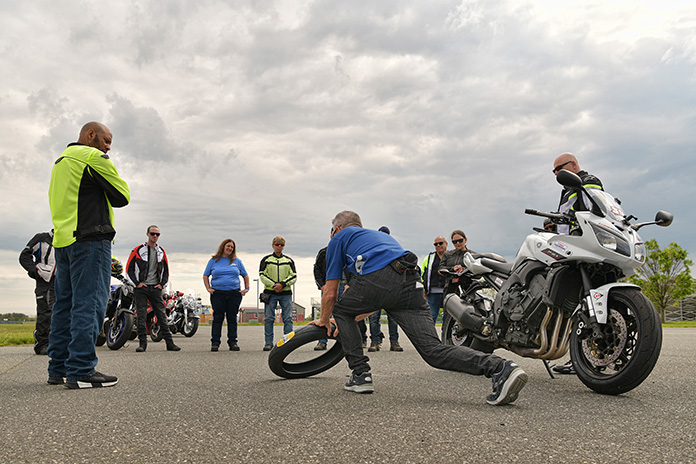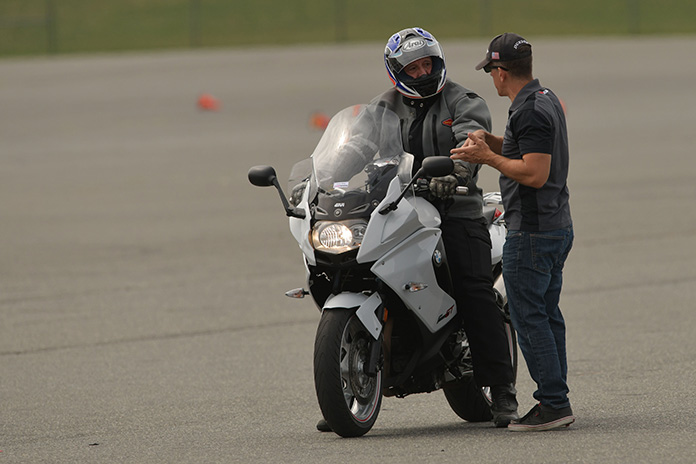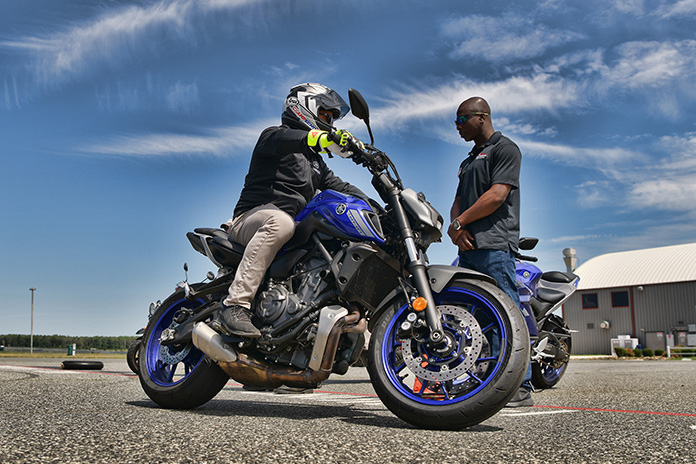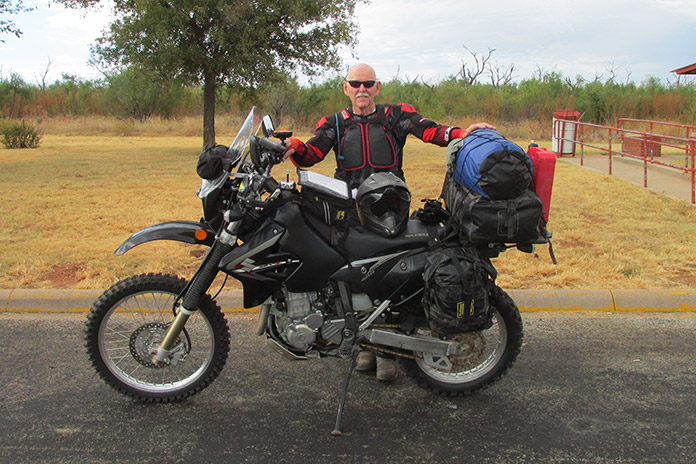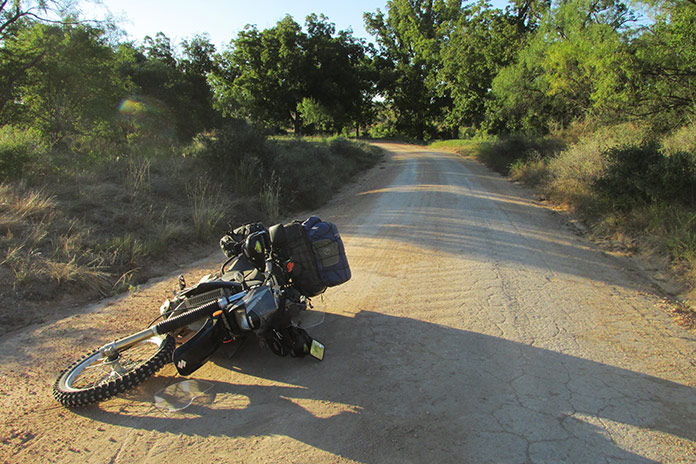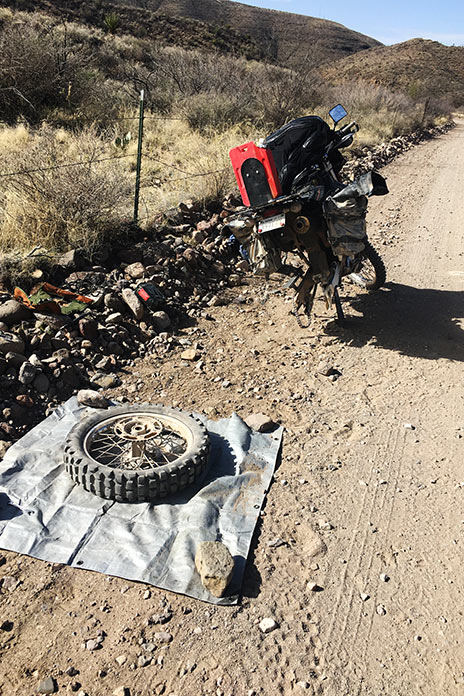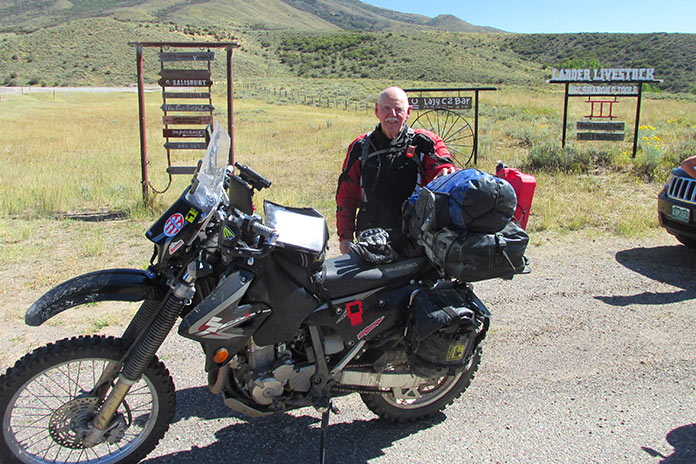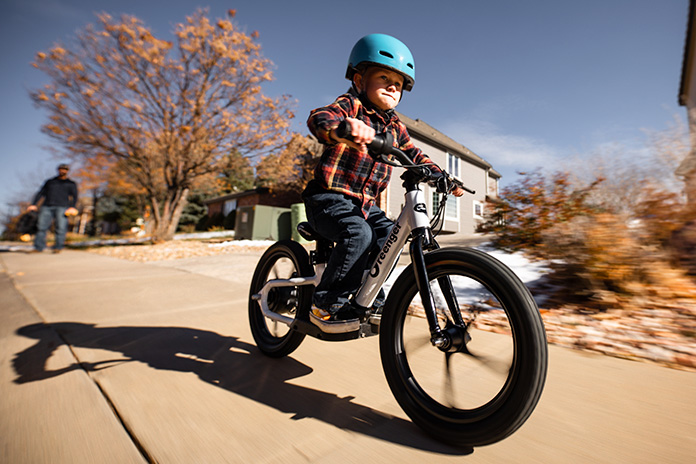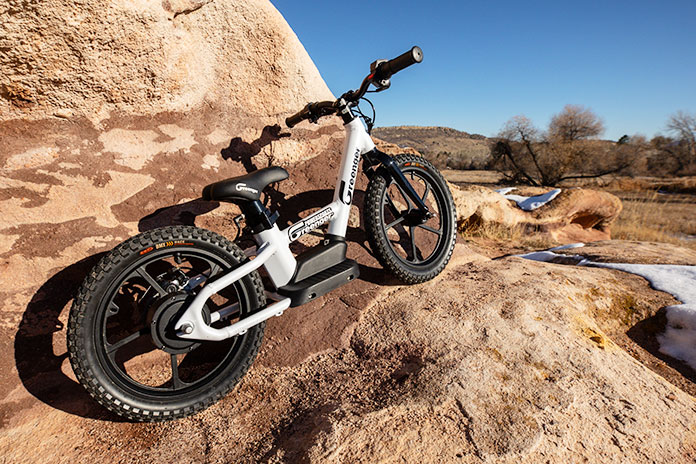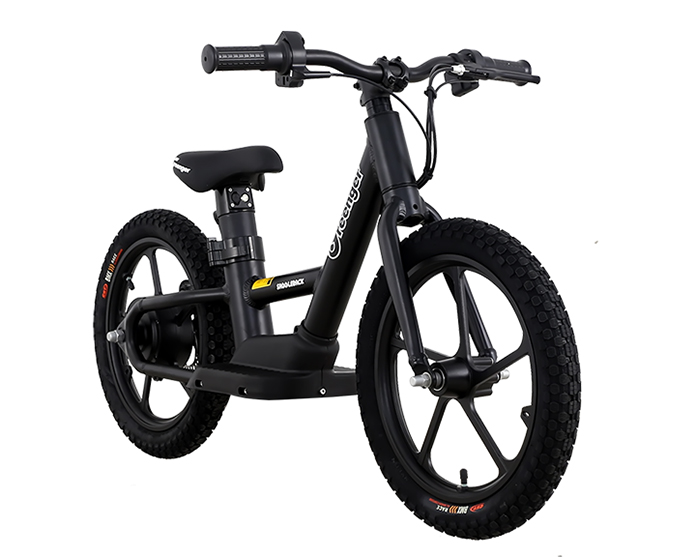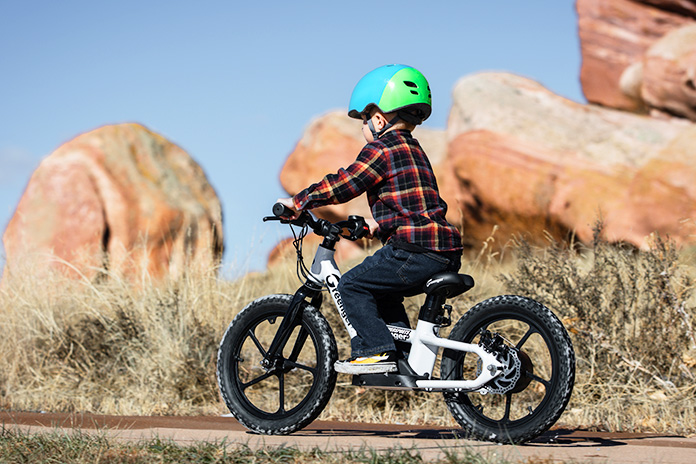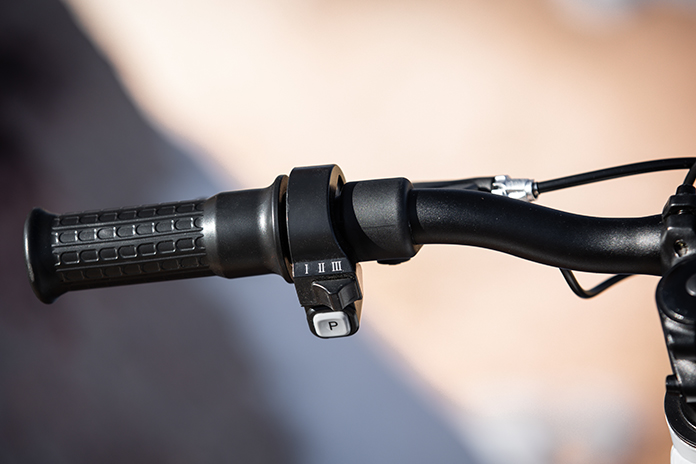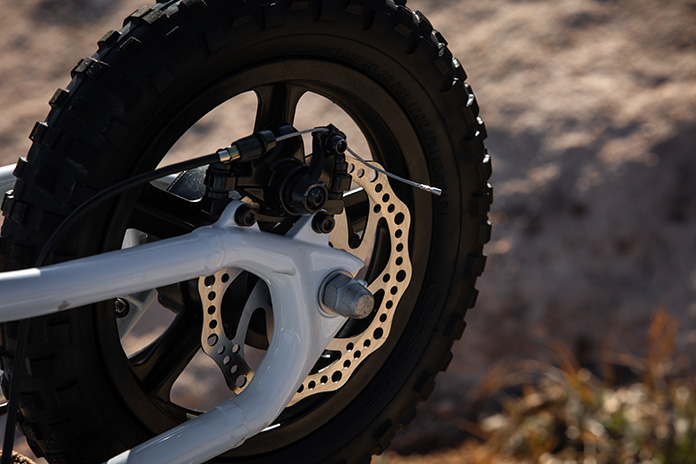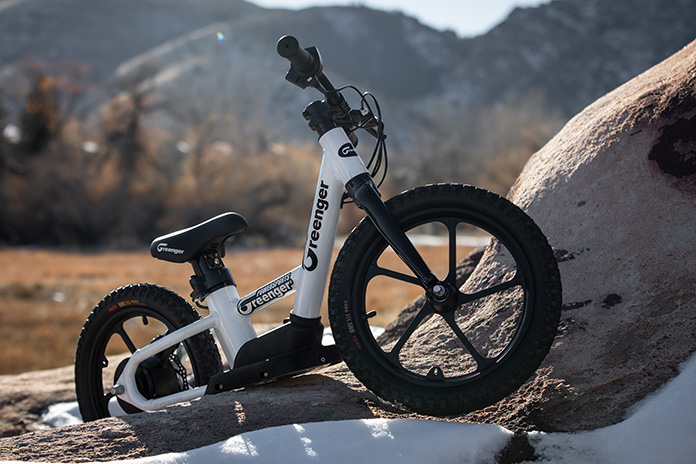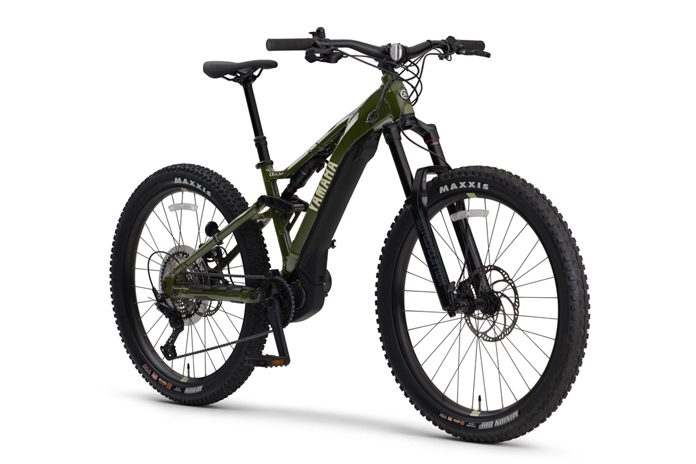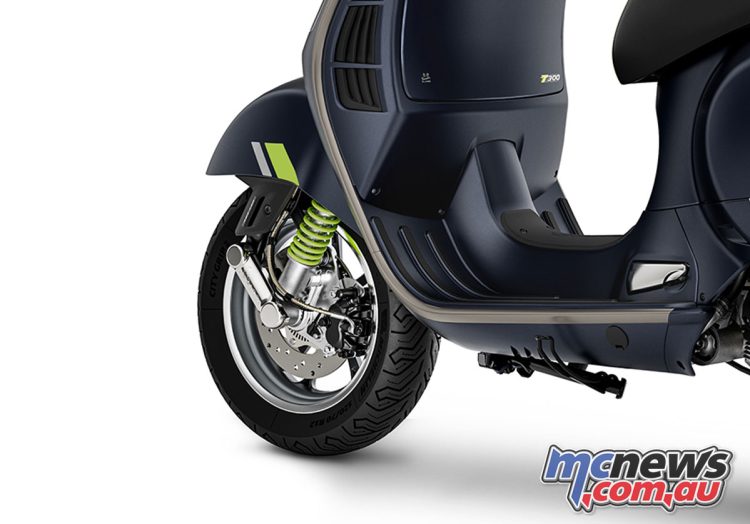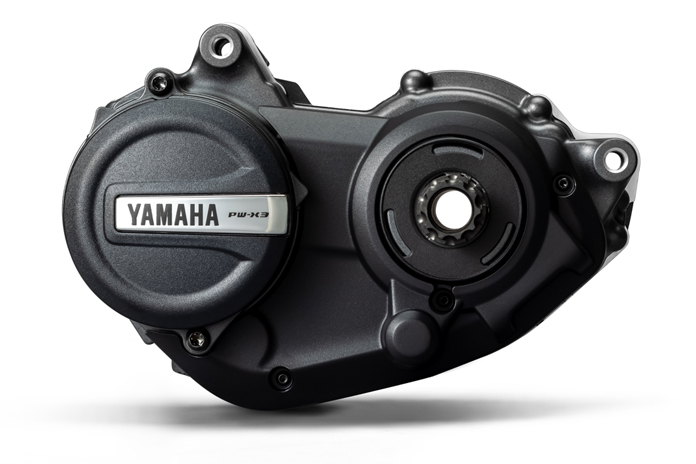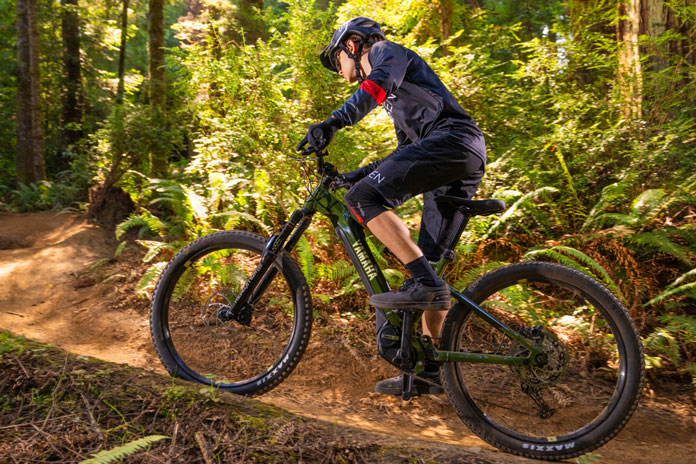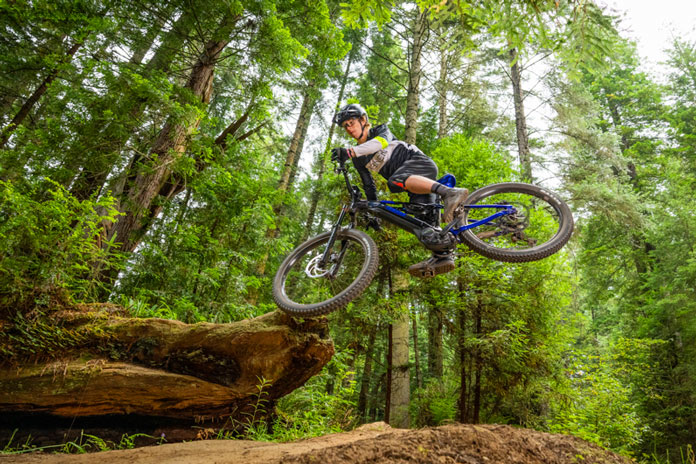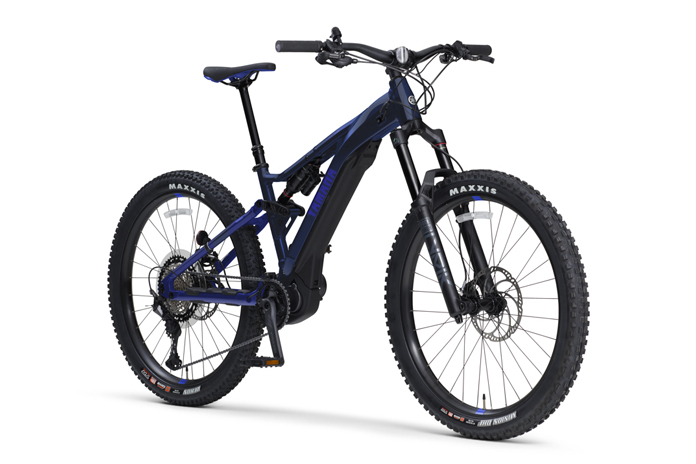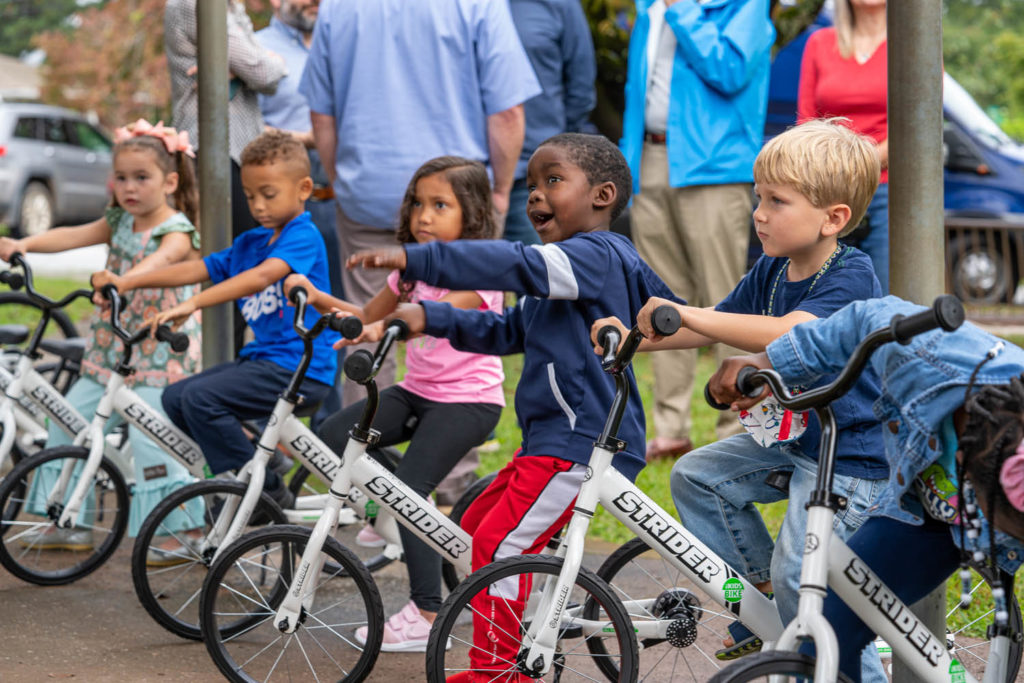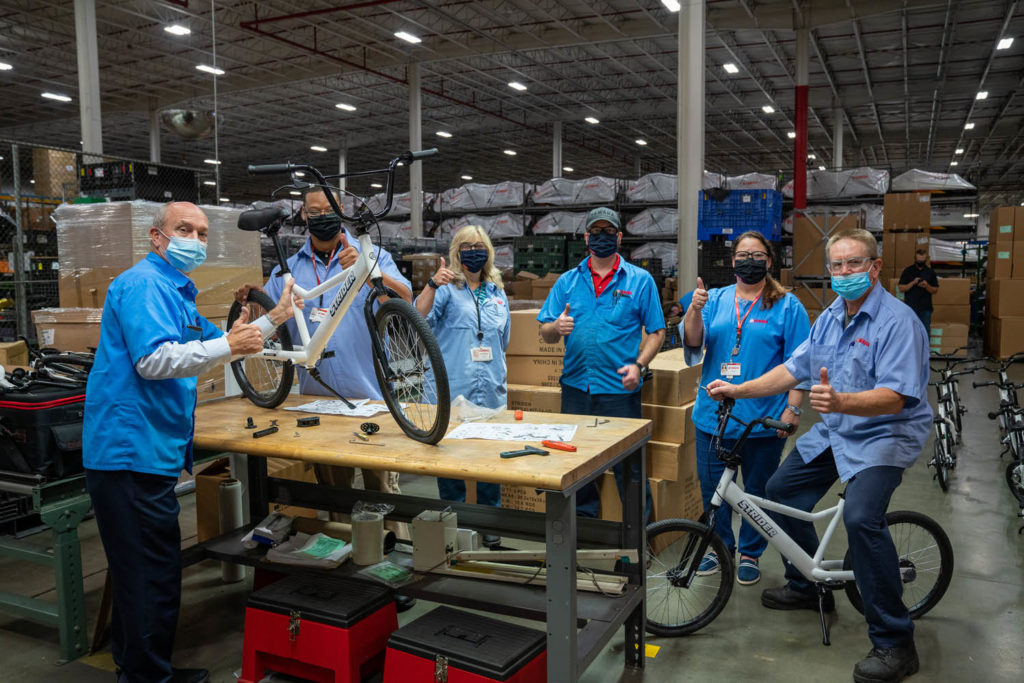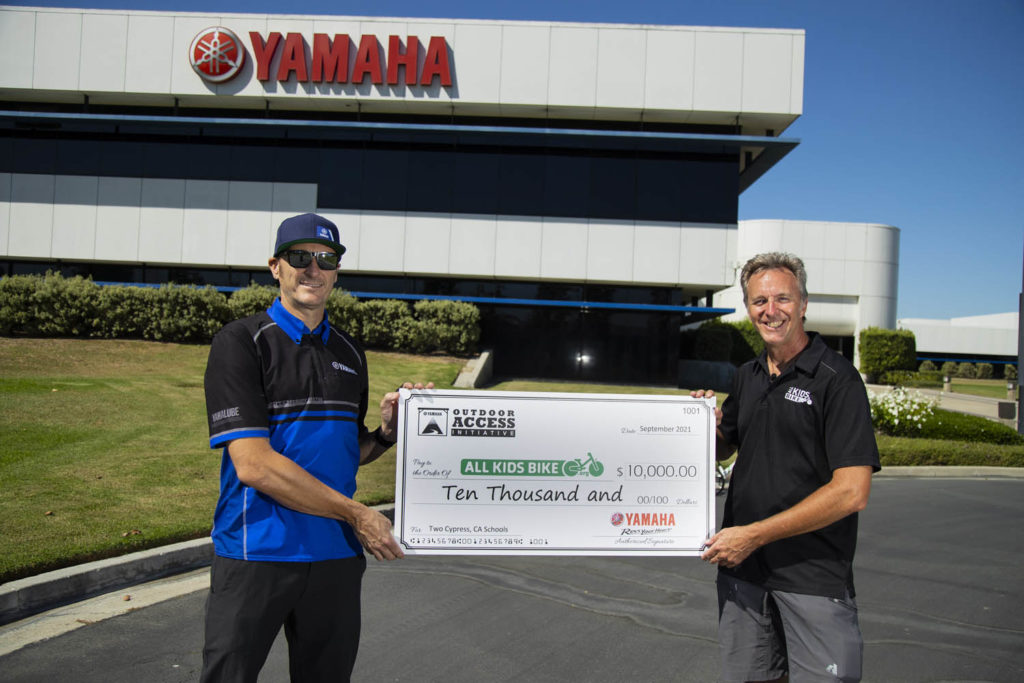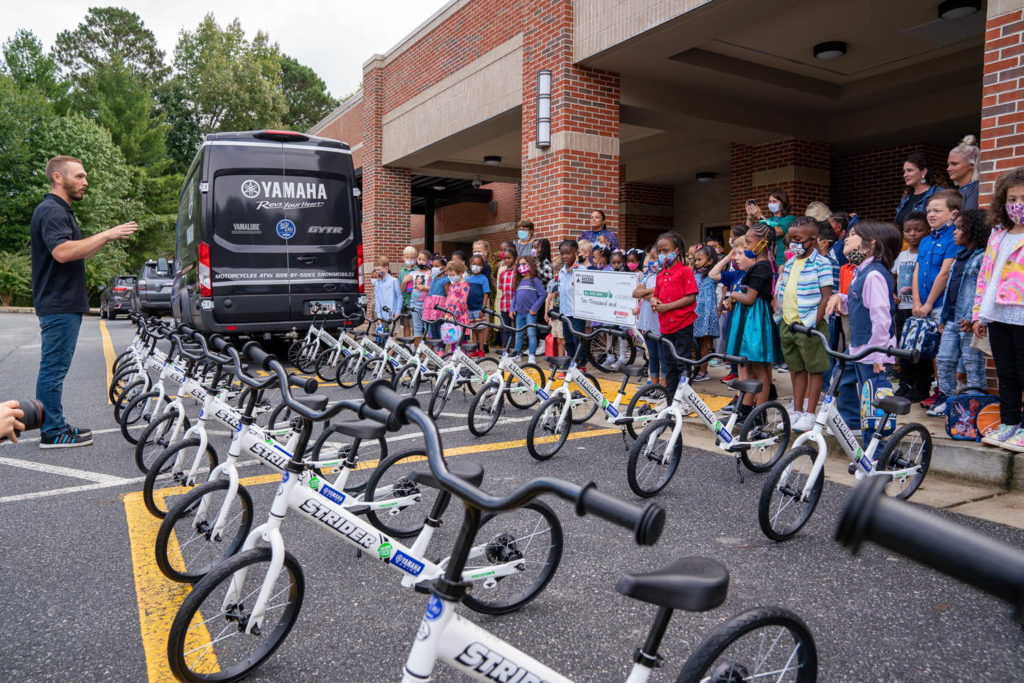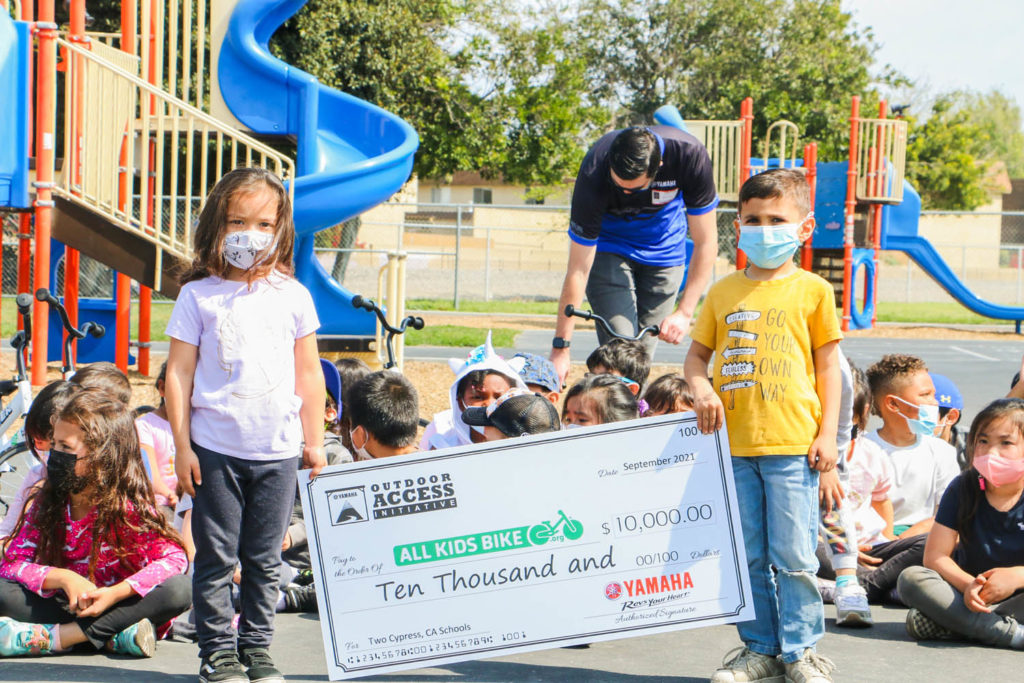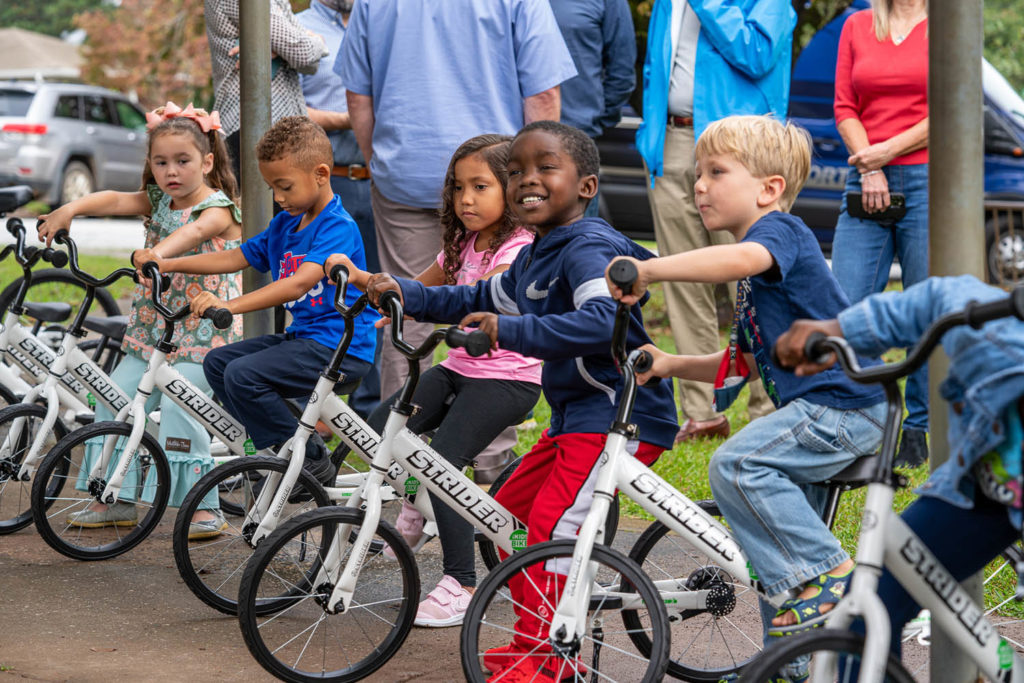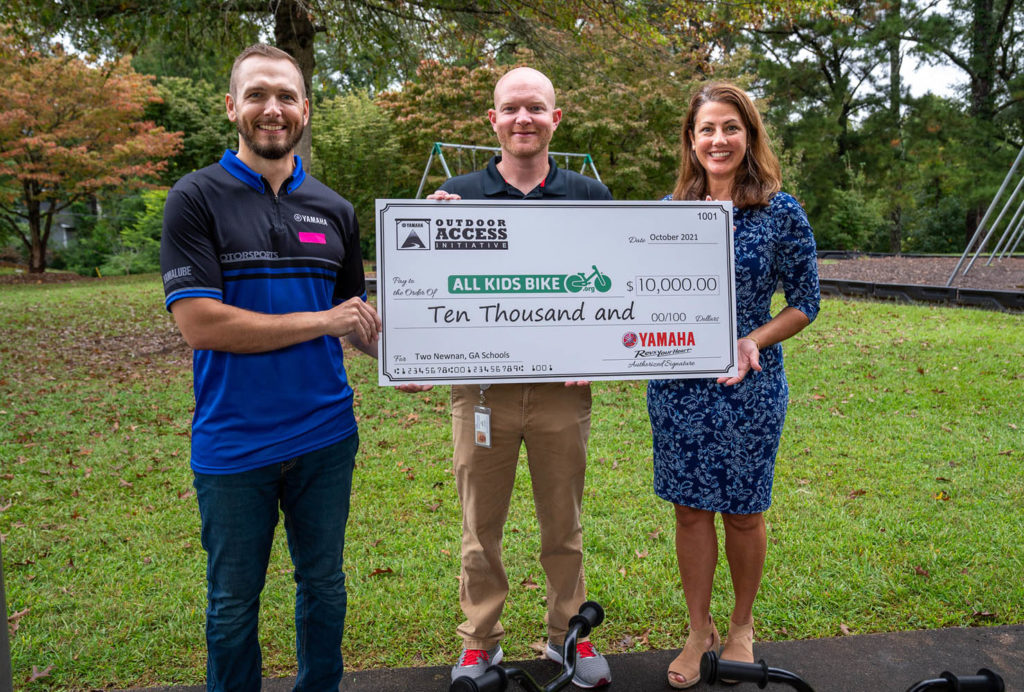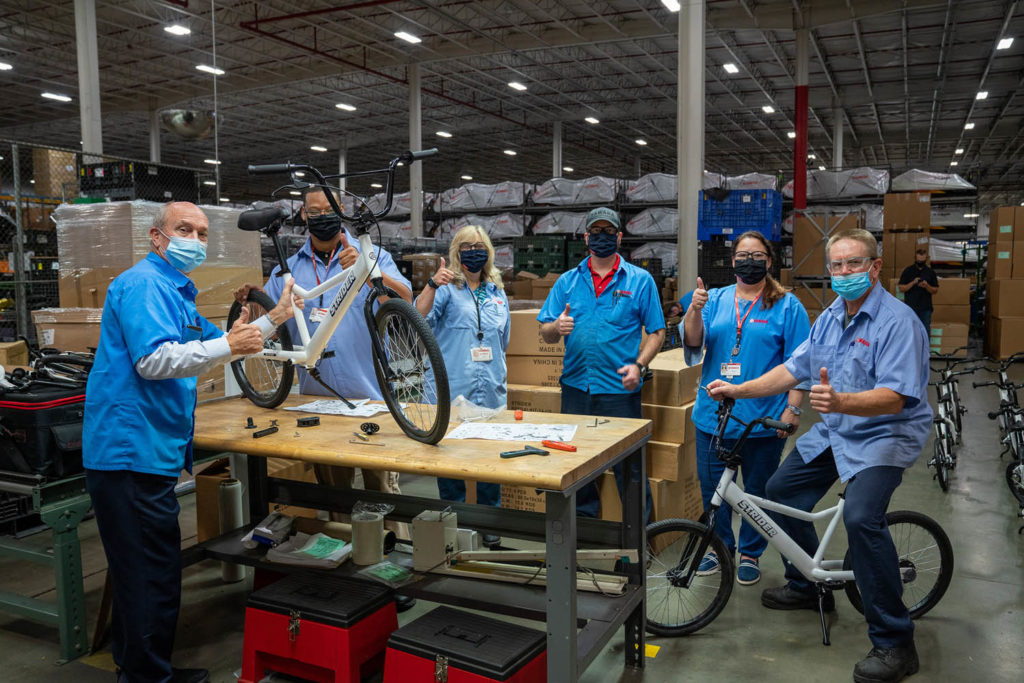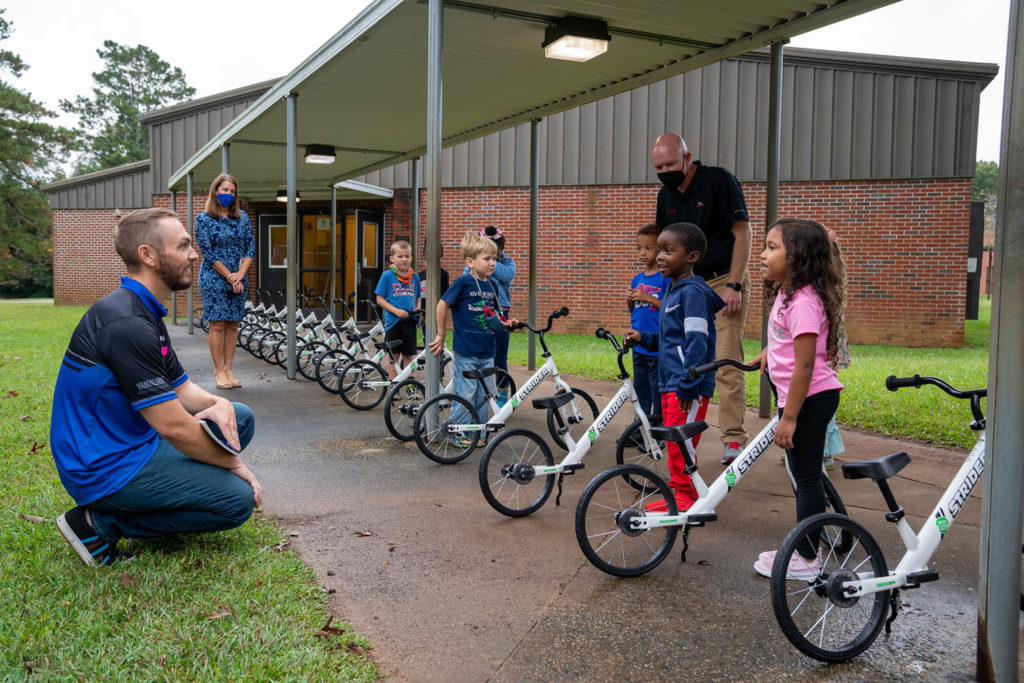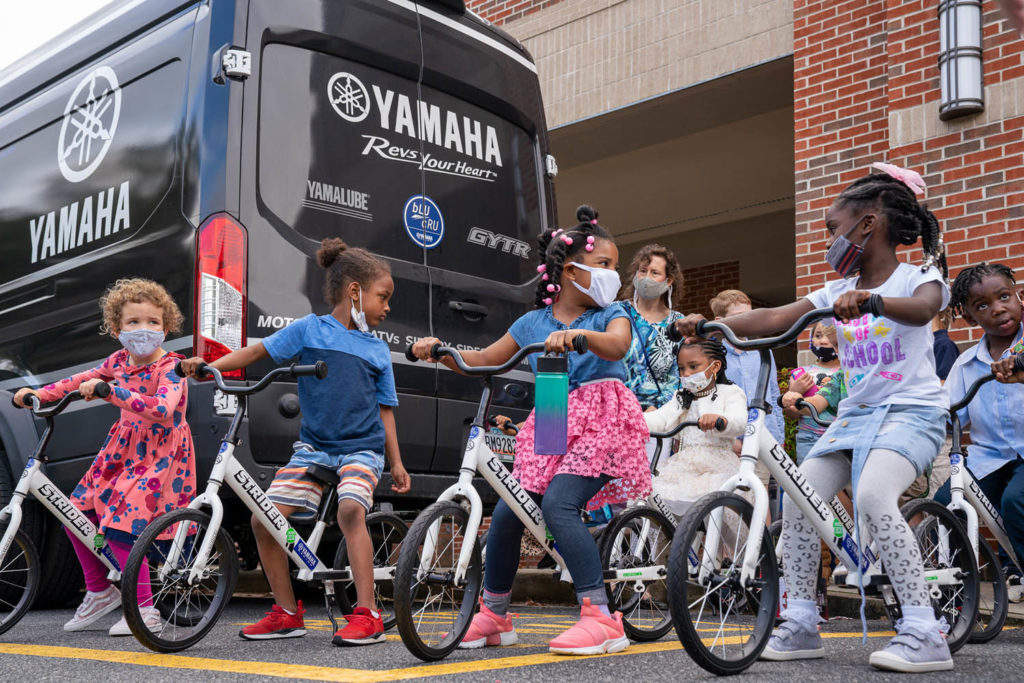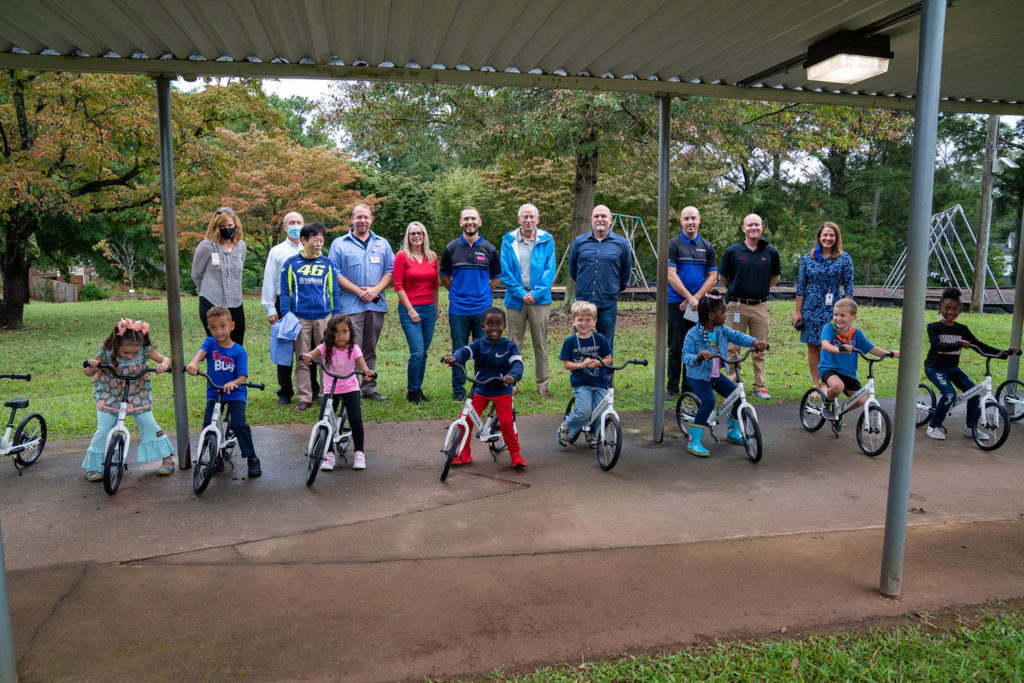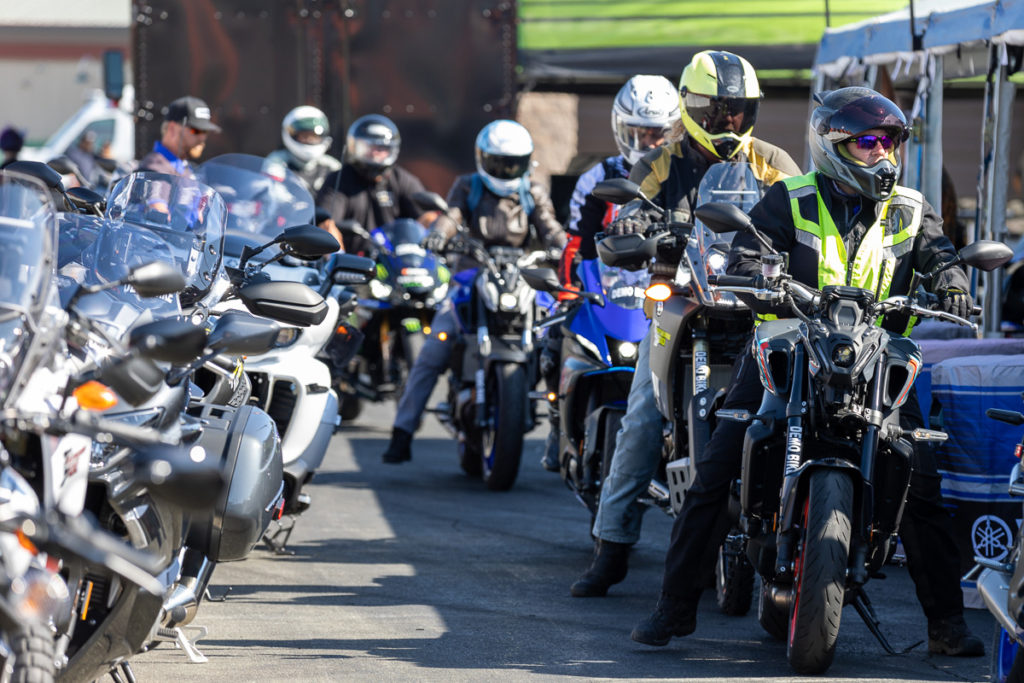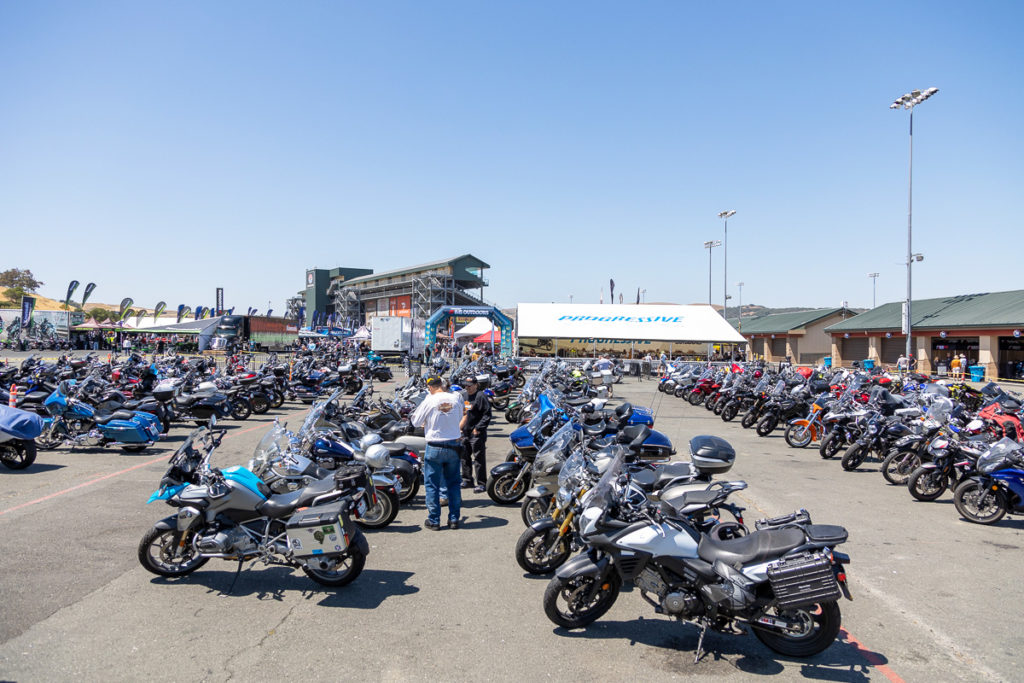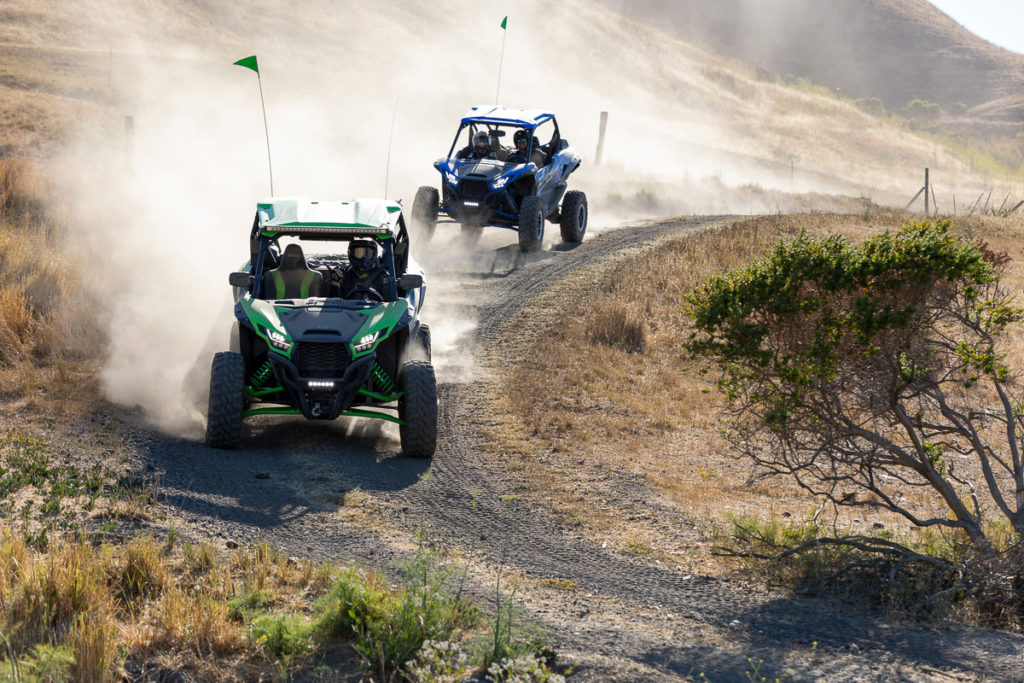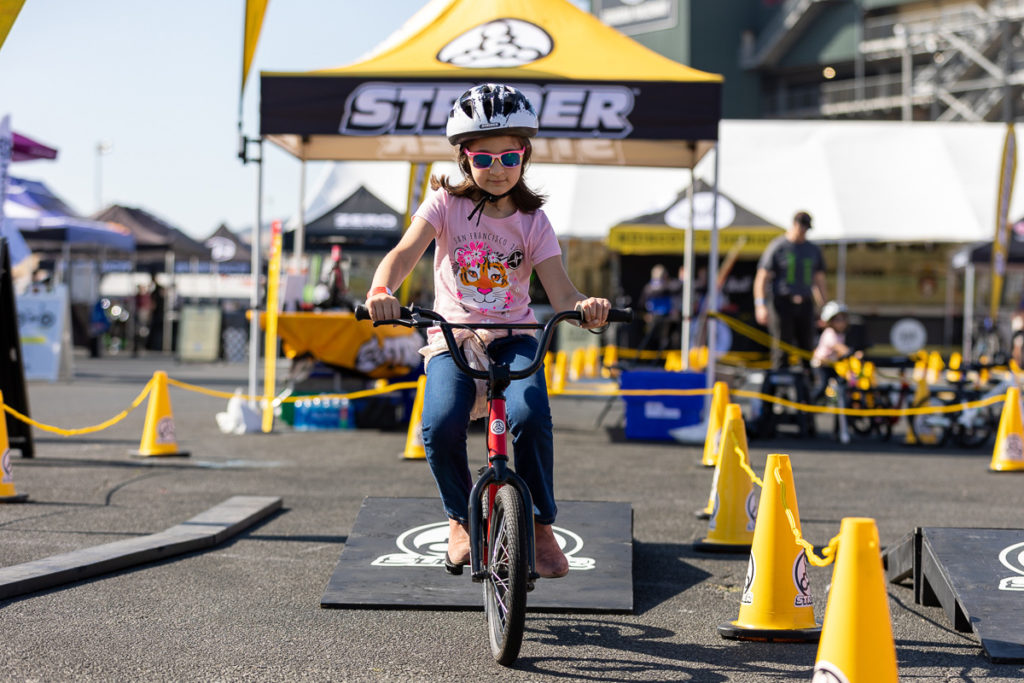When I accepted the assistant editor position at Rider, I expected to ride motorcycles outside of what I was used to. That was one of the many exciting things about the job. This past January, I got what I was looking for – and then some. At the BMW U.S. Rider Academy two-day Street Survival On-Road course at the BMW Performance Center in Greer, South Carolina, I went from riding my usual Honda Rebel 250 the week before to a BMW R 1250 GS. I can handle some easy math, and that’s about five times the displacement of my personal bike. And at 5-foot-1 and 110 lb, I was feeling like I had bitten off a little more than I could chew. By the end of the weekend, however, I didn’t want to get off the big GS.
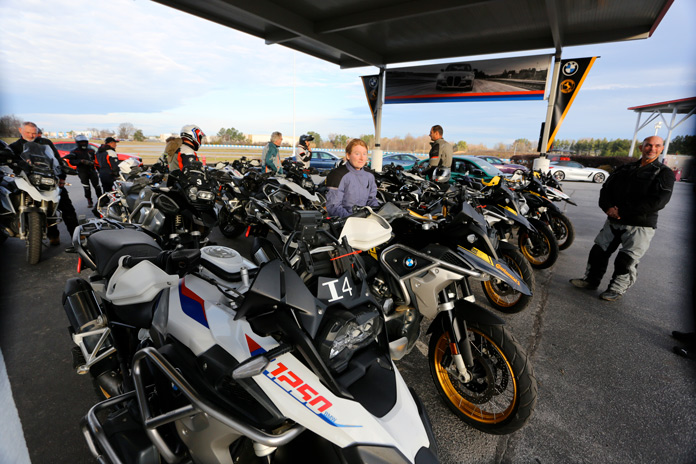
This was the first class I’d taken since the Harley-Davidson Riding Academy at my local dealership seven years ago. That course had been great fun, puttering around the parking lot on Harley Street 500s and taking each step nice and slow. While my riding has improved since then just by putting in the miles, I knew some real training with coaches would be beneficial. So off I went to the BMW Performance Center.
When the Student is Ready…
Upon arriving that first day, I chatted with some of the instructors while waiting for the class to start. When one of them asked me what bike I had reserved for the class, I told him I’d picked the G 310 R, thinking the smallest one would be the most comfortable for me. However, he said I should try the R 1250 GS instead.
I laughed, assuming he was joking. It wouldn’t be the last time I would be wrong over the course of the weekend.
“No, really,” he said. “A lot of people think that the smaller one will be easier, but the 1250 is so well balanced. Once you get used to the size, it’s the better bike for the exercises we’ll be doing.”
At that point, I shrugged my shoulders. I told him maybe I’d give the big bike a go later, with no real confidence that I’d feel up to it that weekend. Little did I know that I’d soon be riding side-saddle around the track on the R 1250 GS, asking myself what I had gotten myself into and thinking my momma’s going to kill me when she sees these photos.
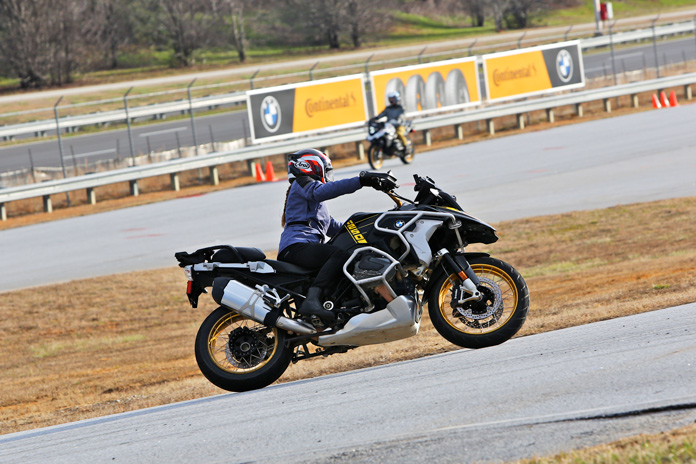
The morning began in the cafeteria drinking free coffee and chatting. At 8:30, we moved to the classroom, where we introduced ourselves and went through a slideshow about the types of exercises we’d be doing that day. There were five instructors and 10 students, so we’d get plenty of help and feedback. We spent less time in the classroom than I expected – only about 30 minutes – then we were off to meet our bikes and get started.
Related: 2018 BMW G 310 R | First Ride Review
That’s when I ended up on the 1250. When we walked out, I spotted the 310 right away and walked toward it. For the first exercise, the instructors told us we needed to use a bike with a centerstand, so I moved over to a 1250. I never did get it up on the stand by myself, but the instructors were happy to help me out by steadying the beast while I tried. I did manage to get it off the centerstand by myself once – my first victory of the day.
After getting to know the bikes, we were ready to ride down to the track, so I once again walked to the 310. This time, a different instructor asked me if I was sure I wouldn’t rather use the 1250 since, again, it would be the best option for the upcoming exercise. At that point, I figured the instructors knew what they were talking about, so I trusted the process. I was there to learn and break out of my comfort zone anyway, right? I slung a leg over the 1250, struggled to reach the kickstand for a solid minute before finally catching it with my boot, and fired it up. Then we were off.
Related: 2021 BMW R 1250 GS | Road Test Review
The first few laps went better than expected. We did some acrobatics that felt nuts to me at first but were actually easy and fun, like riding while standing on the pegs followed by a lap with our right knee on the seat. On the next lap, we put our right leg behind our left and sat side-saddle, and then we rode standing with the right foot on the left peg and the left foot dangling out to the side. Then we did the same thing with the other leg. During that exercise, I thought to myself, This isn’t so bad. I might not drop the bike after all. Wrong again.
Then we got into the slow maneuvers, such as in-line weaving, riding tight circles in a box, and figure-eights. I dropped that big GS over and over and over. I must thank my instructors here for their resilient patience. They never complained or even looked slightly annoyed by having to continually pick my bike up for me. They offered words of encouragement and plenty of feedback and advice, so I always knew what to work on the next go-round. In fact, after every single attempt at an exercise, there was an instructor or two there to provide helpful feedback and cheer us on.
I looked forward to the breaks throughout the day, not only because sitting in a chair resulted in fewer bruises than dropping the motorcycle, but also because it gave us a chance to talk. We got to know each other and learned that, even if we came from different backgrounds – or different continents – we all had a lot more in common than we realized.
The only other woman in the class was Christine, and she is as badass as they come. She’s done other classes and trackdays and has four motorcycles at home, the most recent addition being a Ducati Multistrada. I also met Dave, who lives up near the Blue Ridge Parkway and met our EIC Greg and his wife, Carrie, at an Edelweiss Greece tour last year. There was also John, Terry, Yasser, William, Fernando, George, and Sam, all of whom were lovely to talk to and had plenty of their own experiences to share. The instructors sat with us too, joking and telling stories. Even Neale, the fantastic photographer for this story, found some time between taking photos to sit and chat with us. It was truly wonderful to feel that connection and friendship with a group of people I’d never met before.
At the end of the first day, they brought out a fleet of models for us to ride around the track for what they called the “ultimate test ride.” We’d hop on one bike, ride a couple laps, park it, and switch to something else. I tried out an F 900 XR, a gigantic R 18 cruiser, and other bikes. It was a fun way to end the first day, and it allowed me to make some headway toward my goal of trying out different motorcycles. After that, we were all ready for a beer and some food.
Related: 2021 BMW R 18 Classic | Tour Test Review
…Makes You Stronger
Waking up the second day in the hotel room, I was so sore from being tense while I rode the day before and from dropping the bike that the last thing my body wanted to do was get out of bed. But I rolled out, geared up, and met Neale and Dave in the lobby for breakfast. I’m glad I made the effort and that I chose the two-day course instead of the one-day course because the second day was pure fun.
Don’t get me wrong, there were still exercises that challenged me and taught me to ride in ways I hadn’t before, but the nerves had vanished. I was able to relax and have fun. The other students were no longer strangers but rather new friends, and I knew I could ride that monster of a motorcycle this time because, although it hadn’t been pretty, I’d ridden it before. On the second day, I only dropped it three times! Quite an improvement on the previous day.
The exercises we did on Sunday consisted of putting together the individual techniques we’d learned on Saturday. We worked on emergency stops, cornering, emergency stopping in a corner, and other valuable skills. Halfway through the second day, my bike started leaking fluid (no doubt from the countless times I’d dropped it the day before), so they brought me out a new one. Christine offered to swap with me for the 1250 GS with low suspension that she was riding, and that was much better.
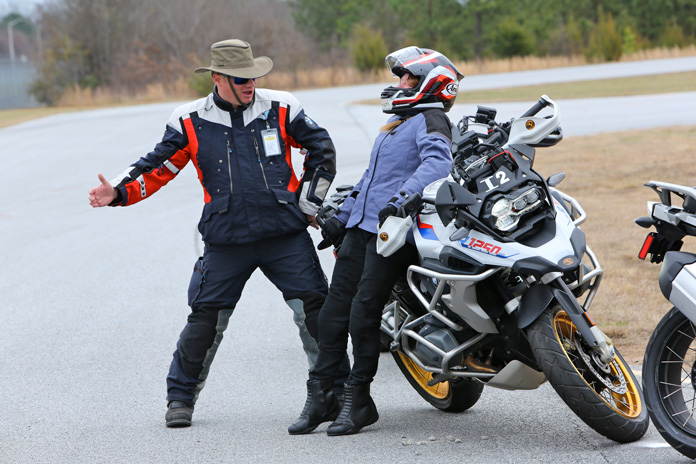
We finished up in the classroom, and the instructors gave us some homework exercises, a goodie bag, and their cards. They encouraged us to reach out to them at any time with pictures of new motorcycles we get or whatever other moto-related activities we’re up to.
By the end of the weekend, I felt much more confident, although plenty sore, and was excited to practice what I’d learned and try out more new motorcycles. As I continue my own moto journey, I hope to see all my new friends from the BMW Street Survival class out on the roads, enjoying their new skills and the motorcycles that brought us all together.
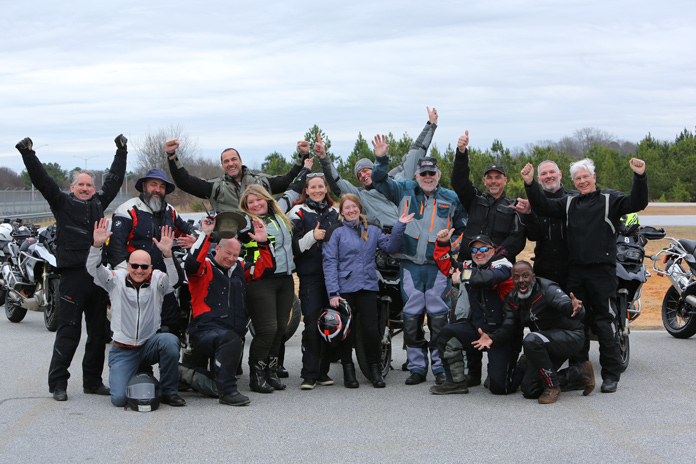
SIDEBAR: BMW U.S. Rider Academy
The BMW Performance Center in Greer, South Carolina, offers several types of motorcycle courses. I took the two-day Street Survival On-Road course, but there’s also a one-day and three-day versions of the course, as well as a ladies-only version.
Other training options include a two-day MSF Basic Rider course; a two-day USRA Authority School (for police-style training); one-day, two-day, and three-day versions of the Adventure Off-Road course; and a ladies-only Adventure Off-Road course. The instructors told us the off-road courses are the most popular (and most fun). They also said all BMW U.S. Rider Academy courses book up fast. The only reason I was able to find an open spot on short notice for the two-day Street Survival course is because someone else had canceled. Usually, they fill up several months in advance.
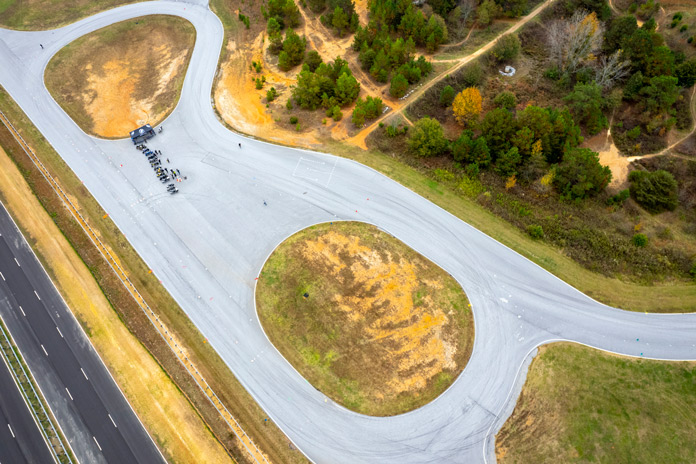
Pricing varies based on the length of the class. One-day classes are $900, two-day classes are $1,800, and three-day classes are $2,700. When I took the class, BMW offered the option of either using one of their motorcycles or bringing a personal motorcycle to use. I chose to rent, as most others in the class did, and I’m glad I did. Although I dropped my bike more than anyone else in the class, I was far from the only student to drop one. Now, BMW requires students to use one of BMW’s motorcycles, which removes any anxiety a student might have about damaging their personal ride. Each course comes with a chef-prepared lunch each day, which was delicious and included several dietary options. BMW also offers 20%-off coupons at rallies and events.
A full list of courses, prices, and availability can be found here.
The post Street Survival at the BMW U.S. Rider Academy first appeared on Rider Magazine.
Source: RiderMagazine.com

